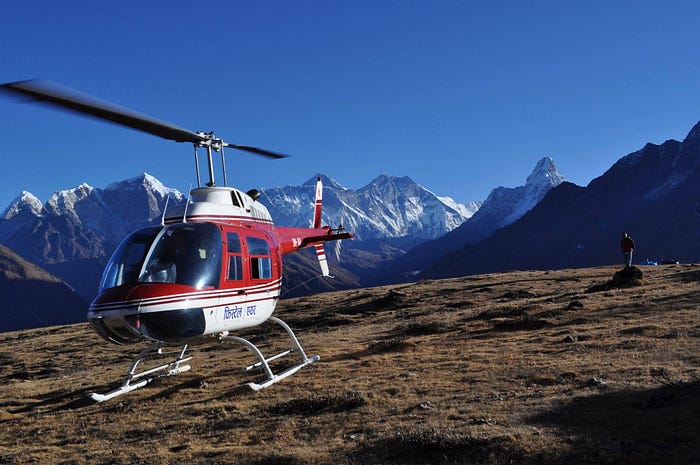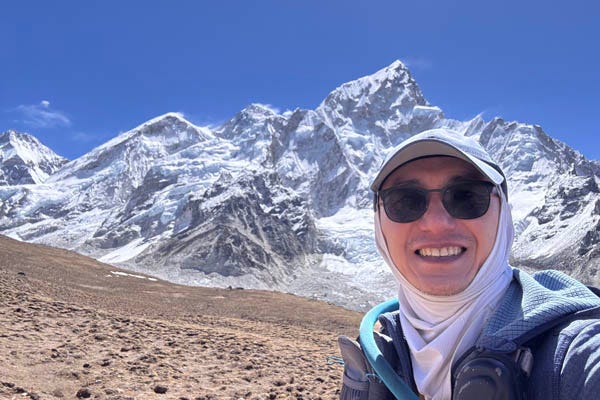The Everest region of Nepal has long been a dream destination for trekkers around the world. With its towering peaks, Sherpa villages, ancient monasteries, and awe-inspiring landscapes, it offers one of the most rewarding trekking experiences on the planet. While many have heard of the famous Everest Base Camp (EBC) trek, there’s a more adventurous, demanding, and remote route in the region — the Everest High Passes Trek.
This trek is not just a walk to
Everest Base Camp; it’s an epic circuit crossing three of the highest trekking
passes in the Khumbu: Kongma La (5,535m), Cho La (5,420m), and Renjo La
(5,360m). It demands serious physical fitness, mental toughness, and careful
preparation. One of the most frequently asked questions by trekkers planning
this journey is: “Do I need a guide for the Everest 3 High Passes Trek?”
In this blog, we’ll explain why
hiring a guide for this trek is not just advisable but crucial for your safety,
enjoyment, and success.
Everest
Base Camp Trek vs. Everest 3 High Passes Trek
Before diving into whether you need
a guide, it’s important to differentiate the two popular treks in the region.
The Everest
Base Camp Trek follows a well-established route through bustling Sherpa
villages like Namche Bazaar, Tengboche, Dingboche, and Lobuche before reaching
the base of the world’s highest mountain. The trail is marked, and during
trekking seasons (spring and autumn), you’ll find a steady stream of trekkers
along the path. Moreover, almost every village along the EBC route is
connected with mobile phone signals, internet services, and emergency contact
points. That makes it a relatively safe and straightforward trek for
experienced hikers, even without a guide, provided they’re well-prepared.
In contrast, the Everest
3 High Passes Trek takes you off the main trail, over three challenging
high-altitude passes and into remote valleys with significantly fewer trekkers.
Some sections are notorious for unpredictable weather, landslides, crevasses,
rockfalls, and avalanche risks. Additionally, many parts of the route,
especially around the high passes, are out of phone network coverage and
internet access.
And this is where having a
professional, experienced guide becomes essential.
Why
You Need a Guide for the 3 High Passes Trek
1.
Safety in Isolated, High-Altitude Terrain
The primary reason to hire a guide
for the 3 High Passes Trek is your safety. High mountain passes like
Kongma La, Cho La, and Renjo La are known for rapid weather changes, difficult
navigation, and physically taxing ascents and descents. In these conditions,
trails can be obscured by snow, fog, or landslide debris.
Without proper guidance, there’s a
real risk of getting lost, straying onto dangerous terrain, or getting
caught in poor weather without shelter. A qualified guide is familiar with the
terrain, knows how to identify signs of landslide-prone areas and avalanche
risks, and can lead you through safe alternative routes when necessary.
2.
Lack of Communication Facilities
Unlike the standard Everest Base
Camp route, the 3 High Passes route lacks consistent mobile phone coverage
and internet connectivity, especially on the passes themselves and in
isolated sections like between Lobuche and Chukhung, Dzongla and Gokyo, and
Lungden and Renjo La. In emergency situations, you won’t be able to call for
help or check the weather forecast.
Guides typically carry satellite phones
or radios and have contact with local rescue operators, lodges, and
trekking agencies. They can quickly arrange evacuation or assistance if you
face altitude sickness, injuries, or other emergencies.
A small investment in a guide could
literally protect your life worth millions when things go wrong in the
mountains.
3.
Altitude-Related Health Management
The 3 High Passes Trek takes you
above 5,300 meters multiple times, with daily sleeping altitudes often
exceeding 4,500 meters. This poses a serious risk of acute mountain sickness
(AMS), high-altitude pulmonary edema (HAPE), or high-altitude cerebral edema
(HACE).
A trained guide is equipped to
recognize early signs of altitude sickness and take appropriate measures —
whether it’s suggesting an extra acclimatization day, guiding you to a lower
altitude, or coordinating an emergency evacuation. This proactive management is
critical because delays in treatment at high altitude can quickly turn
life-threatening.
4.
Challenging and Changing Trails
The trails over the high passes
aren’t always well-marked, and in snow or bad weather, they can disappear
altogether. Icefalls, glacial crevasses, rockfalls, and landslides frequently
alter parts of the route, especially around Cho La and Kongma La.
Guides trek these trails multiple
times every year and stay updated about current trail conditions, safer
routes, and lodge availability. They know where to cross glaciers safely,
how to navigate snow-covered passes, and which areas to avoid during heavy
snowfall or after rockslides.
5.
Local Knowledge and Cultural Insight
Aside from safety, having a guide
also enhances your trekking experience. Everest’s Khumbu region is rich in Sherpa
culture, ancient monasteries, and Buddhist traditions. Guides share local
stories, explain religious practices, and introduce you to customs you might
otherwise overlook.
They also assist in finding good
accommodation and food options, handling permits and paperwork, and
managing logistics — allowing you to focus on enjoying the trek without stress.
How
Much Does a Guide Cost for the 3 High Passes Trek?
The cost of hiring a licensed,
experienced guide for the Everest 3 High Passes Trek typically ranges from USD
35 to 50 per day, depending on their experience, language skills, and
whether you book through an agency or independently.
When compared to the overall cost of
your trekking gear, flights, permits, accommodation, and food — not to mention
the priceless value of your safety — this is a modest, worthwhile investment.
Final
Thoughts: Better Safe Than Sorry
While the classic Everest Base
Camp Trek can often be safely done without a guide for experienced
trekkers, the Everest 3 High Passes Trek is a different beast altogether.
Its high-altitude passes, isolated terrain, rapidly changing weather, and lack
of consistent communication facilities make it a trek where professional
guidance isn’t just helpful — it’s essential.
You’re not just paying for
navigation — you’re investing in your safety, peace of mind, and an enriched
cultural experience. In the unforgiving environment of the high Himalayas,
a small daily guide fee is a smart decision to protect your life and make your
trek both safer and more rewarding.
So if you’re dreaming of crossing
those three iconic passes, do yourself a favor — hire a local guide and trek
responsibly.







